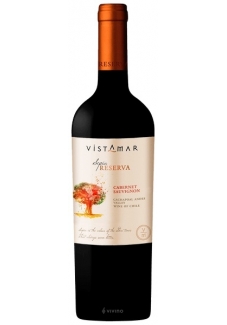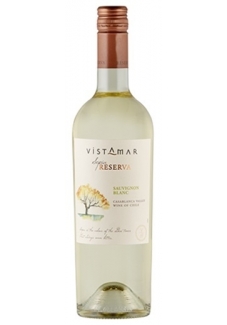Chilean wine has a long history for a New World wine region, as it was the 16th century when the Spanish conquistadors brought Vitis vinifera vines with them as they colonized the region. In the mid-19th century, French wine varieties such as Cabernet Sauvignon, Merlot, Carmenère and Franc were introduced. In the early 1980s, a renaissance began...
Chilean wine has a long history for a New World wine region, as it was the 16th century when the Spanish conquistadors brought Vitis vinifera vines with them as they colonized the region. In the mid-19th century, French wine varieties such as Cabernet Sauvignon, Merlot, Carmenère and Franc were introduced. In the early 1980s, a renaissance began with the introduction of stainless steel fermentation tanks and the use of oak barrels for aging. Wine exports grew very quickly as quality wine production increased. The number of wineries has grown from 12 in 1995 to over 70 in 2005.
A large number of French people immigrated to Chile during the late 20th century, bringing more vinicultural knowledge to the country. Chile is now the fifth largest exporter of wines in the world, and the seventh largest producer. The climate has been described as midway between that of California and France. The most common grapes are Cabernet Sauvignon, Merlot and Carmenère. So far Chile has remained free of the phylloxera louse, which means that the country's grapevines do not need to be grafted with phylloxera-resistant rootstocks.
The climate is varied with the northern regions being very hot and dry compared to the cooler, wetter regions in the south. In the Valle Central around Santiago, the climate is dry with an average of 15 inches (38 centimeters) of rain and little risk of springtime frost. The proximity to the Dry Andes help create a wide diurnal temperature variation between day and nighttime temperatures. This cool drop in temperature is vital in maintaining the grapes' acidity levels.
Most of Chile's premium wine regions are dependent on irrigation to sustain vineyards, getting the necessary water from melting snow caps in the Andes. In the developing wine regions along the Coastal Ranges and in the far south, there is not a lack in needed rainfall but vineyard owners have to deal with other factors such as the Humboldt Current from the Pacific which can bathe a vineyard with a blanket of cool air. For the rest of Chile's wine regions, the Coastal Ranges serve a buffer from the current and also acts as a rain shadow. The vineyards in these regions are planted on the valley plains of the Andes foothills along a major river such as the Maipo, Rapel and Maule Rivers.
The vineyards of Chile fall between the latitudes of 32 and 38° s which, in the Northern Hemisphere would be the equivalent of southern Spain and North Africa. However the climate in Chile's wine regions is much more temperate than those regions, comparing more closely to California and Bordeaux. Overall, it is classified as a Mediterranean climate with average summer temperatures of 59–64 °F (15–18 °C) and potential highs of 86 °F (30 °C).
There is not much vintage variation due to the reliability of favorable weather with little risk of summer time frost or harvest time rains. The main exception, again, is Casablanca due in part to its proximity to the Pacific. For the Chilean wine regions in the Valle Central, the Andes and Coastal Ranges create a rain shadow effect which traps the warm arid air in the region. At night, cool air comes into the area from the Andes which dramatically drops the temperature. This help maintain high levels of acidity to go with the ripe fruit that grapes develop with the long hours of uninterrupted sunshine that they get during the day. The result is a unique profile of flavonoids in the wine which some Chilean wineries claim make Chilean wines higher in resveratrol and antioxidants. Harvest typically begins at the end of February for varieties like Chardonnay with some red wine varieties like Cabernet Sauvignon being picked in April and Carmenère sometimes staying on the vine into May.
Chile There are no products in this category
Subcategories
-
Reds
Chilean Wines consists of over twenty grape varieties which are grown in Chile, mainly a mixture of Spanish and French varieties, but many wineries are increasing experimentation in higher numbers. For most of Chile's history, Pais was the most widely planted grape only recently getting passed by Cabernet Sauvignon. Other red wine varieties include Merlot, Carménère, Zinfandel, Petite Sirah, Cabernet franc, Pinot noir, Syrah, Sangiovese, Barbera, Malbec, and Carignan.
In the late 20th century as Chilean wines became more popular, wine tasters around the world began to doubt the authenticity of wines labeled Merlot and Sauvignon blanc. The wines lack many of the characteristics and typicity of those grapes. Ampelographers began to study the vines and found that what was considered Merlot was actually the ancient Bordeaux wine grape Carménère that was thought to be extinct. The Sauvignon blanc vines were found to actually be Sauvignonasse, also known as Sauvignon vert, or a mutated Sauvignon blanc/Sémillon cross.
-
Whites
Chilean White wine varieties include Chardonnay, Sauvignon blanc, Sauvignon vert, Sémillon, Riesling, Viognier, Torontel, Pedro Ximénez, Gewürztraminer and Muscat of Alexandria. Chilean winemakers have been developing a distinct style for their Cabernet Sauvignon, producing an easy drinking wine with soft tannins and flavors of mint, black currant, olives and smoke.
The country's Chardonnays are less distinctive, following more the stereotypical New World style. While sparkling wines have been made since 1879, they have not yet established a significant place in Chile's wine portfolio. In recent years, the Pais grape variety has been creatively employed on its own or in blends, to make modern wines that have received favorable reviews.ries began to import true Merlot and Sauvignon blanc cuttings to where most bottles labeled Merlot and Sauvignon blanc from vintages in the 21st century are more likely to be those varieties.
ABN: 11 806 263 393
Liquor Licenses
337 526 06
360 674 16


